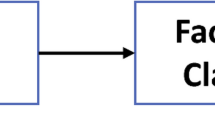Abstract
Recognition of human feelings is among the most tedious tasks using computer vision with immense scope. Currently, about 450 million individuals suffer from psychiatric diseases, putting psychiatric illnesses among the world's leading causes of ill health and impairment treatments, which are accessible, but nearly two-thirds of individuals with a recognized psychiatric illness do not seek help from a mental healthcare professional. Although human beings are extremely complex species when it comes to emotions, but facial expressions can be utilized to approximate the emotion of user. This paper focuses on various available algorithms and approaches to recognize human facial emotion and compare the efficiency of various methods. Although there are six basic emotions—anger, disgust, fear, happy, sad, surprise—but human beings constantly experience combination of these emotions, thus making it difficult to pinpoint a single emotional state accurately. In this paper, an attempt is made to compare accuracy to recognize five human emotions—anger, happy, neutral, sad and surprise by observing facial muscle movement through computer vision and predicting emotion with the help of machine learning and deep learning models. The performance efficiency is measured simply by providing each model with fixed number of input images and comparing correct number of outputs for each model. Finally, a comparison between different machine learning and deep learning-based models is made based upon the accuracy score for each model.
Access this chapter
Tax calculation will be finalised at checkout
Purchases are for personal use only
Similar content being viewed by others
References
Zhang H, Jolfaei A, Alazab M (2019) A face emotion recognition method using convolutional neural network and image edge computing. IEEE Access 7:159081–159089. https://doi.org/10.1109/ACCESS.2019.2949741
Kołakowska A, Landowska A, Szwoch M, Szwoch W, Wróbel M (2014) Emotion recognition and its applications. Adv Intell Syst Comput 300:51–62. https://doi.org/10.1007/978-3-319-08491-6_5
Chiranjeevi P, Gopalakrishnan V, Moogi P (2015) Neutral face classification using personalized appearance models for fast and robust emotion detection. IEEE Trans Image Process 24(9):2701–2711. https://doi.org/10.1109/TIP.2015.2421437
Soleymani M, Asghari-Esfeden S, Fu Y, Pantic M (2016) Analysis of EEG signals and facial expressions for continuous emotion detection. IEEE Trans Affect Comput 7(1):17–28. https://doi.org/10.1109/TAFFC.2015.2436926
Chauhan NK, Singh K (2018) A review on conventional machine learning versus deep learning. In: 2018 international conference on computing, power and communication technologies (GUCON), Greater Noida, Uttar Pradesh, India, pp 347–352. https://doi.org/10.1109/GUCON.2018.8675097
Oheix J (2018) Face expression recognition dataset. Retrieved from www.kaggle.com. https://www.kaggle.com/jonathanoheix/face-expression-recognition-dataset
Gutiérrez PA, Hervás-Martínez C, Martínez-Estudillo FJ (2011) Logistic regression by means of evolutionary radial basis function neural networks. IEEE Trans Neural Netw 22(2):246–263. https://doi.org/10.1109/TNN.2010.2093537
Yang F (2018) An implementation of Naive Bayes classifier. In: 2018 international conference on computational science and computational intelligence (CSCI), Las Vegas, NV, USA, pp 301–306. https://doi.org/10.1109/CSCI46756.2018.00065
Zhang S, Li X, Zong M, Zhu X, Wang R (2018) Efficient kNN classification with different numbers of nearest neighbors. IEEE Trans Neural Netw Learn Syst 29(5):1774–1785. https://doi.org/10.1109/TNNLS.2017.2673241
PD WM, Haryoko (2019) Optimization of parameter support vector machine (SVM) using genetic algorithm to review Go-Jek’s services. In: 2019 4th international conference on information technology, information systems and electrical engineering (ICITISEE), Yogyakarta, Indonesia, pp 301–304. https://doi.org/10.1109/ICITISEE48480.2019.9003894
Verma A, Singh P, Rani Alex JS (2019) Modified convolutional neural network architecture analysis for facial emotion recognition. In: 2019 international conference on systems, signals and image processing (IWSSIP), Osijek, Croatia, pp 169–173. https://doi.org/10.1109/IWSSIP.2019.8787215
Samudre P, Shende P, Jaiswal V (2019) Optimizing performance of convolutional neural network using computing technique. In: 2019 IEEE 5th international conference for convergence in technology (I2CT), Bombay, India, pp 1–4.https://doi.org/10.1109/I2CT45611.2019.9033876
Zhou Y, Liu Y, Han G, Fu Y (2019) Face recognition based on the improved MobileNet. In: 2019 IEEE symposium series on computational intelligence (SSCI), Xiamen, China, pp 2776–2781.https://doi.org/10.1109/SSCI44817.2019.9003100
Author information
Authors and Affiliations
Editor information
Editors and Affiliations
Rights and permissions
Copyright information
© 2021 The Author(s), under exclusive license to Springer Nature Singapore Pte Ltd.
About this chapter
Cite this chapter
Aggarwal, A., Garg, S., Madaan, R., Kumar, R. (2021). Comparison of Different Machine Learning and Deep Learning Emotion Detection Models. In: Singh, B., Coello Coello, C.A., Jindal, P., Verma, P. (eds) Intelligent Computing and Communication Systems. Algorithms for Intelligent Systems. Springer, Singapore. https://doi.org/10.1007/978-981-16-1295-4_41
Download citation
DOI: https://doi.org/10.1007/978-981-16-1295-4_41
Published:
Publisher Name: Springer, Singapore
Print ISBN: 978-981-16-1294-7
Online ISBN: 978-981-16-1295-4
eBook Packages: Intelligent Technologies and RoboticsIntelligent Technologies and Robotics (R0)




